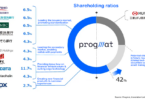In this opinion piece, Rehan Ahmed, CEO of Singapore FMI Marketnode explores how blockchain and tokenization can transform fund distribution.
Asia Pacific has cemented its position as a leading global capital hub, home to four of the world’s top ten capital sources as of early 2024. The region is poised for a new phase of growth, driven by digital assets and tokenised securities, as institutional investors and high-net-worth individuals (HNWIs) increasingly seek more diversified portfolios. Nowhere is this transformation more evident than in the funds industry, which has seen some of the largest strides in tokenisation with expectations of it encompassing 1% of global mutual fund and ETF assets under management – over $600 billion – by 2030. However, behind the scenes of this promising picture lies an operational reality that is encumbered by fragmentation.
Despite strong growth projections for the region’s funds markets, inconsistent regulatory frameworks and market practices across jurisdictions hamper technological progress and undermine service delivery. This weakens market connectivity, whether between institutional and retail investors or offshore and onshore ecosystems. Without a streamlined infrastructure, fund distribution remains cumbersome, settlement cycles are prolonged, and data management lacks consistency. Overcoming these challenges calls for a next-generation funds market infrastructure — one that is digital-first, blockchain-enabled, and built for global interoperability.
Unchaining Fund Flows Through Digital Market Infrastructure
To truly unlock Asia’s capital markets, it is essential to rethink how investment flows across jurisdictions. Today, cross-border fund distribution is hindered by operational inefficiencies, excessive reliance on intermediaries, and prolonged settlement cycles. These challenges create friction for investors and fund managers alike, facing transaction costs of $120 billion annually and limiting accessibility to global investment opportunities.
A digital-first approach can bridge the offshore-onshore silos by leveraging blockchain technology and smart contracts to automate fund processing, significantly reducing administrative burdens and accelerating settlement cycles from T+2 to near real-time. This streamlining of operations not only improves efficiency but also reduces counterparty risks and enhances liquidity, unlocking robust distribution channels for fund managers. Emerging digital market infrastructure (DMI) platforms that tap onto blockchain, such as Marketnode, can provide the plumbing to connect offshore and onshore fund ecosystems. By seamlessly orchestrating the fund process from order to settlement on a singular platform, participants can enjoy greater data transparency and broader capital market access both locally and across the globe.
Regulatory interoperability is another critical enabler of seamless fund flows. Asia’s fragmented regulatory landscape often leads to duplication of compliance efforts, making it costly and time-consuming for funds to meet Anti-Money Laundering (AML), Know-Your-Customer (KYC), and tax reporting requirements across jurisdictions. Initiatives like the Asia Funds Passport and the ASEAN Collective Investment Scheme have attempted to harmonise regulations, but adoption remains uneven. A robust digital infrastructure will help to simplify compliance complexity, enabling the reconciliation of accounting requirements and market-specific mandates. Moreover, DMIs afford greater flexibility in integration with existing and emerging market infrastructure systems, ultimately redefining how offshore and onshore markets interact for a more globally connected investment landscape.
Reimagining Fund Management Through Tokenisation
Digital assets are no longer a fringe experiment but an embedded financial pillar of modern finance. As tokenised securities gain regulatory clarity, they have become a strategic imperative for institutional and retail investors alike. There are over 6.6 million HNWIs in Asia, holding a combined total of $11.1 trillion. This segment is growing fast at 5.4% annually, presenting a significant market opportunity.
Representing traditional fund units as digital tokens introduces new use cases, from enhanced liquidity management to more efficient collateralisation, and personalised investment structures. Tokenisation also enables real-time settlement, reducing counterparty risk and operational inefficiencies. In one notable example, Hong Kong’s central bank issued the world’s first tokenised government green bond in 2023 under the Hong Kong Monetary Authority’s (HKMA) Green Bond Program. The bond was fully subscribed and settled on a blockchain platform, demonstrating the viability of tokenised financial instruments within a regulated market.
For institutional investors, this means improved risk management and capital efficiency, while retail investors, historically limited in their access to institutional-grade funds, stand to gain greater access to more diversified fund products through fractional ownership. This democratisation of access could significantly expand participation in Asia’s capital markets, fostering broader financial inclusion.
Furthermore, as the technology matures, tokenised funds will enable more seamless integration with digital collateral networks. As the number of digital asset exchanges increases, there is potential for high-quality funds to be used as collateral. In fact, such assets are already being leveraged in global markets with firms like Ondo Finance leading the charge in tokenising money market funds for yield enhancement — a trend that is likely to gain accelerated traction in Asia. Such innovations will enhance margin efficiencies and streamline collateral management processes to ultimately improve capital utilisation across Asia’s financial ecosystem.
Priming Asia’s Funds Infrastructure for the Next Era of Growth
The success of Asia’s digital funds ecosystem hinges on solving industry pain points, making strategic infrastructure choices, and fostering collaboration. Addressing inefficiencies in fund distribution, particularly in leading financial hubs like Singapore and Hong Kong, is a crucial first step. However, the application of distributed ledger technology must be purpose-driven — focused on improving efficiency, transparency, and connectivity rather than being a technology-first experiment. Early adoption, pilot program and real-world implementations will be essential in proving value, particularly through strategic partnerships with transfer agents, regulators and global financial institutions.
For a truly scalable and future-proof digital market infrastructure, expansion must be asset-agnostic and market-agnostic — capable of adapting to different jurisdictional regulatory requirements and facilitating diversified fund flows.
If designed with these principles in mind, Asia’s fund infrastructure won’t just evolve, it will lead. By bridging gaps across investors, markets, and technologies, the region can move from silos to synergy, establishing itself as the global benchmark for the digital fund economy of tomorrow.






